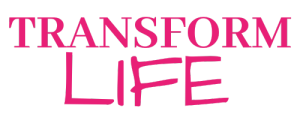
In the dynamic world of occupational therapy, professionals are constantly seeking innovative ways to support the emotional well-being of their clients, especially children and teenagers. One promising approach gaining popularity is the implementation of the Zones of Regulation framework. Developed by Leah Kuypers, this evidence-based program provides a structured way to teach self-regulation skills, empowering individuals to recognize and manage their emotions effectively. In this blog post, we will explore the significance of Zones of Regulation in occupational therapy and discuss practical strategies for its implementation with children and teenagers.
Understanding the Zones of Regulation
The Zones of Regulation is a user-friendly framework designed to help individuals identify and regulate their emotions. The model categorizes emotions into four color-coded zones, each representing a different level of alertness and emotion regulation. The zones are as follows:
1. The Blue Zone (Low Alertness):
This zone represents low energy and low alertness. Individuals in the Blue Zone may feel sad, tired, or sick. It is an optimal state for relaxation and rest.

2. The Green Zone (Good to Go):
This zone indicates a regulated state where individuals are calm, happy, focused, and ready to learn. It is the ideal zone for effective functioning.

3. The Yellow Zone (Heightened Alertness):
In the Yellow Zone, individuals experience a heightened state of alertness and arousal. They may feel anxious, frustrated, or excited. It’s a zone where emotions are more intense and may require some regulation.

4. The Red Zone (Extreme Alertness):
The Red Zone represents an extremely heightened state of alertness. Individuals may feel angry, terrified, or out of control. Effective regulation strategies are crucial in this zone.

Implementing Zones of Regulation in Occupational Therapy
1. Assessment and Goal Setting:
Before incorporating the Zones of Regulation, occupational therapists should conduct a thorough assessment of the child or teenager’s emotional regulation abilities. This may include observations, interviews, and standardized assessments. Based on the assessment, therapists can collaborate with clients and their families to set realistic goals for emotional regulation.
2. Education and Awareness:
Introduce the Zones of Regulation concept to clients in a clear and age-appropriate manner. Utilize visual aids, stories, or games to help children and teenagers understand the different zones and associated emotions. Emphasize that all emotions are valid, and the goal is to develop strategies for appropriate expression and regulation.
3. Identification of Triggers:
Work collaboratively with clients to identify specific triggers that may lead them to different zones. Triggers can be environmental, social, or internal. Understanding these triggers allows individuals to anticipate and manage their emotional responses more effectively.
4. Developing Coping Strategies:
Help children and teenagers build a toolbox of coping strategies for each zone. These strategies can include deep breathing exercises, sensory activities, mindfulness practices, or social skills. Tailor the toolbox to suit the individual’s preferences and needs.
5. Social Skills Training:
In the context of Zones of Regulation, social skills play a crucial role. Work on developing and practicing appropriate social skills for each zone. This may involve teaching communication skills, conflict resolution strategies, and understanding social cues.
6. Incorporating Sensory Integration:
Since sensory processing is a fundamental aspect of occupational therapy, integrate sensory activities into the Zones of Regulation framework. Sensory-based interventions can help individuals self-regulate and maintain an optimal level of arousal.
7. Parent and Caregiver Involvement:
Collaborate with parents and caregivers to reinforce the Zones of Regulation at home. Provide resources and training to support the implementation of strategies outside of therapy sessions. Consistency between home and therapy settings enhances the effectiveness of the intervention.
8. Monitoring Progress:
Regularly assess and monitor the progress of clients in using the Zones of Regulation. Adjust strategies and interventions as needed based on the individual’s evolving needs. Celebrate successes and provide positive reinforcement to motivate continued progress.
9. Integration into Daily Routine:
Incorporate the Zones of Regulation into the daily routine of children and teenagers. Create visual schedules or reminders to prompt self-check-ins throughout the day. Consistent practice is essential for the internalization of the framework.
10. Collaboration with School:
For school-age children and teenagers, collaborate with teachers and school staff to implement the Zones of Regulation in the educational setting. This collaboration ensures a consistent approach and support across various environments.
Conclusion
Implementing the Zones of Regulation in occupational therapy for children and teenagers is a holistic and empowering approach to enhance emotional well-being. By providing a structured framework and practical strategies, occupational therapists can guide their clients towards better self-regulation, improved social interactions, and overall success in various life domains. As the therapeutic community continues to explore innovative interventions, the Zones of Regulation stands out as a valuable tool in promoting emotional resilience and fostering positive mental health in the younger population.

Transform Life is a NDIS registered organisation that provides support for your autistic teenager, as well as support to you as a parent to best navigate the challenges your teenager and family face on a daily basis.
Book your consult with an experienced Therapist at Transform Life to explore how OT can support you and your family.







